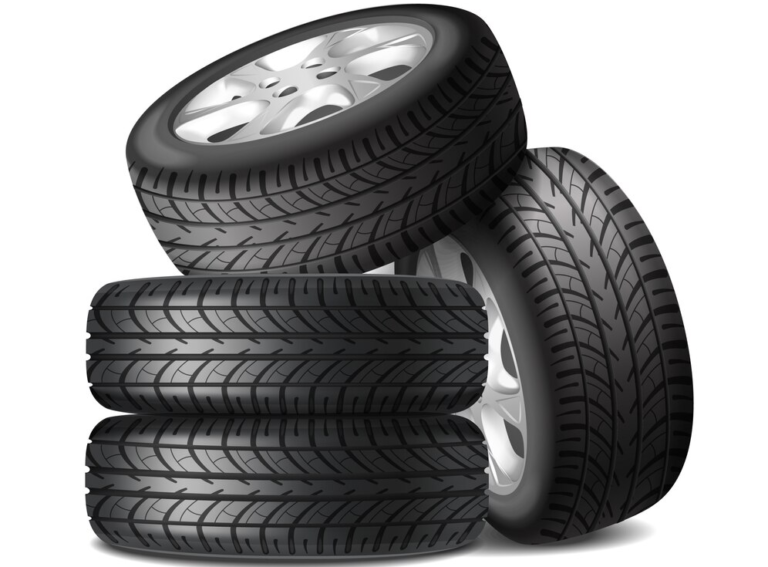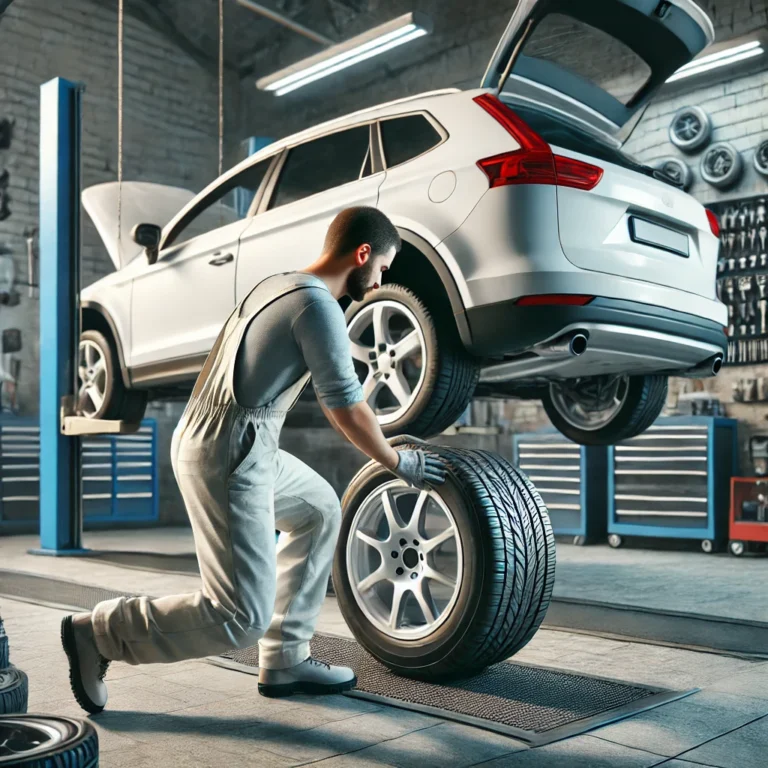Uneven tire wear is a common issue that affects vehicle safety, performance, and fuel efficiency. It occurs when tires wear down at different rates across their surface, often due to alignment issues, improper inflation, or suspension problems. Addressing uneven tire wear early can prevent costly repairs and ensure a smoother, safer ride. Here’s a closer look at the causes, types, and solutions for uneven tire wear.
Common Causes of Uneven Tire Wear
- Poor Wheel Alignment
Misalignment occurs when the wheels aren’t positioned correctly relative to each other and the vehicle’s frame. Alignment issues cause certain parts of the tire to bear more weight, resulting in uneven wear. Common signs include pulling to one side while driving and off-center steering. - Improper Tire Inflation
Underinflated tires wear on the outer edges, while overinflated tires wear in the center. Both over- and under-inflation cause premature tire wear, reduce fuel efficiency, and compromise handling. - Worn Suspension Components
Worn shocks, struts, or other suspension parts can cause the tires to bounce or lean unevenly, leading to inconsistent contact with the road. This causes specific areas of the tire to wear more quickly. - Unbalanced Wheels
Wheels that are not balanced create vibrations while driving, causing certain parts of the tire to contact the road more heavily. This uneven contact results in tire wear in patches or scalloping patterns. - Frequent Heavy Loads
Regularly carrying heavy loads places additional stress on the tires, especially the rear tires. Over time, this leads to excessive wear on certain areas of the tire, depending on load distribution.
Types of Uneven Tire Wear
- Inner or Outer Edge Wear (Camber Wear)
This type of wear indicates that the tire is tilting inward or outward, often due to camber misalignment. Camber alignment issues are commonly seen after suspension modifications or from worn suspension components. - Center Wear
Center wear occurs when tires are overinflated, causing the middle part of the tire to make the most contact with the road. This reduces traction and results in faster wear in the center. - Edge Wear
Edge wear on both sides of the tire is usually due to underinflation. The tire’s edges bear the weight, causing the sides to wear more quickly than the center. - Patch or Cupped Wear
Cupping, or scalloped wear, often appears as a series of high and low spots along the tread. It’s caused by unbalanced wheels or worn suspension components, leading to a bumpy ride and uneven tire contact. - Feathered Wear
Feathering is a wear pattern where one edge of each tread rib becomes rounded while the opposite edge stays sharp. This is often due to toe misalignment, where tires are pointed slightly inward or outward.
Solutions for Uneven Tire Wear
- Regular Wheel Alignments
Alignment adjustments should be part of routine maintenance, especially if you notice steering issues or experience vibrations while driving. A professional alignment will ensure that the tires wear evenly by positioning them correctly. - Maintain Proper Tire Inflation
Checking tire pressure monthly and keeping it at the manufacturer’s recommended level prevents both under- and overinflation. This not only promotes even wear but also improves fuel efficiency. - Rotate Tires Regularly
Rotating your tires every 5,000 to 7,500 miles helps distribute wear evenly among all tires. This is particularly important for front-wheel-drive or rear-wheel-drive vehicles where the front or rear tires carry more load. - Balance the Wheels
Unbalanced wheels can lead to vibrations and uneven tire wear. Having the wheels balanced whenever you rotate tires or install new ones helps prevent patch wear and extends tire life. - Inspect and Replace Worn Suspension Parts
Worn shocks, struts, and bushings can cause tires to bounce or shift unevenly. Replacing these parts as they age will help maintain even tire contact and prevent uneven wear.
Preventing Uneven Tire Wear
- Routine Inspections: Regularly inspecting your tires for wear patterns can help catch issues early, allowing you to address alignment or inflation problems before they cause significant wear.
- Drive Smoothly: Avoid aggressive driving and hard braking, as these habits can cause tires to wear unevenly. Smooth, gradual acceleration and braking help prolong tire life.
- Follow a Maintenance Schedule: Regular maintenance, including alignment, rotation, and balance checks, keeps your tires wearing evenly and improves overall vehicle performance.
Uneven tire wear affects more than just tire lifespan—it compromises safety, fuel efficiency, and vehicle handling. By recognizing the causes and signs of uneven wear and following a regular maintenance schedule, you can ensure a safer, smoother, and more cost-effective driving experience.




